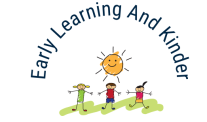
Is Tattling Good or Bad? It’s Actually Both
“He stole my toy but won’t return it!”
It was my turn to be the winner. He is a cheater. It’s unfair !”
Oh yes. The rat. The informant. The informant. The theme is common in mobster films and on local playgrounds.
In our culture, it’s not a secret that tattling can be seen as a negative. It’s nitpicky, annoying complaining. We don’t have the time to deal with it. Am I right?
But there are a lot of grey areas, and the difference between tattling and whistleblowing-raising a legitimate alarm can be complicated.
When we look at the causes of tattling in our children, we can find out how to fix the problem. Let’s get started: Why do kids inform, and how can we encourage or discourage this behavior?
Tattling can be unhelpful.
There are times when we must know what is going on. However, the majority of these cases are just tattling and are, therefore, unnecessary. Our children’s stories are not true or used negatively.
It is generally accepted that tattling someone is not an acceptable solution if it does not help them. It’s important to teach kids how to solve problems. The more they feel comfortable with dealing with eyebrow-raising behaviors in positive ways, the less likely they will be to squeal.
There are four main reasons why children engage in negative bullying:
1. Tattling to Get Attention
The main reason kids tattle on us is to get our Attention.
You may have been staring at the iPhone for too long, or you might work a lot from your home. Any child can start to feel unimportant and left out.
Kids will do anything to get noticed. For them, negative Attention is preferable to no attention.
If your 4-year-old is tired of her older brother watching TV, she can get your Attention when she complains about him exceeding his weekly screen time. If your 6th-grader is looking for sympathy, they might complain about his friend playing Minecraft at the last sleepover without him.
In this case, the solution is to give our children more proactive and positive Attention.
This is not easy in our busy lives. It can begin small. It can be a great idea to set aside a short 10-15 minute time block every day for our children to have fun. If we can give our children uninterrupted, one-on-one time, they will be less likely to try to get our Attention negatively (like by nitpicking or tattling).
2. The Tattling of Spite
Kids can be angry and frustrated at times. Kids can be hurt by a friend or angry at a sibling who is demanding.
Your tween may be angry at his older sister and tell her that she is listening to inappropriate music.
You might find that your 5-year-old is mad at his annoying little sibling and decides to tell you about how his little brother abused him yesterday, all in the hope that he will get into serious trouble today.
We can redirect a tattler at the moment if it is motivated by anger or spite.
You can ask: “Are your intentions to harm or help my brother, or to tell me something to make him upset?”
The majority of kids will say that they’re trying to help. Then you can say, “Okay, let’s concentrate on his problem.” What are your ideas to help him? ?”
You can inform your children that the “I’m Telling!” communication will be limited to informative communications if the tattling is continued.
3. If you want to feel more mature or important, you can squeal.
Kids love to be noticed, but they also want to feel like adults.
After telling her teacher about a girl who (allegedly) teased the boy over his hair, a second-grader may feel empowered. Even though she did not personally witness it, the fact that teasing is bad makes her feel authorized to report it and condemn it.
We need to promote maturity in other ways.
Give kids age-appropriate options. Second-graders might enjoy being in charge of a day’s meal planning or choosing the topics for the next family meeting.
Children should be encouraged by their parents to help them with any task that they are capable of handling themselves. It means that even a five-year-old can pack her lunch, empty the dishwasher, and complete his homework.
Even if kids rebel, asking them to take responsibility instills confidence. Our trust in them and their abilities, no matter how small or large, empowers them.
They may also no longer feel the need to criticize others’ shortcomings or bad behavior to make themselves feel better.
4. When the Tattler Is Unwilling to Solve Problems (Or Needs to Know How to Do So)
Children who are empowered to solve problems will no longer need to scream and yell.
“… children who tattle are able to use their social-emotional skills, but they cannot solve problems on their own. – Eileen Kennedy Moore, Ph.D. Psychology Today
The best way to learn is by role-playing different scenarios and using Take Time for training (just one tool in our 36 Seven-Step Parenting System(r),.
You could say to your child: “Let’s pretend you are playing with Sam outside, and Sam will not let you use his basketball. You tell me Sam won’t let you share the ball. This is tattling, or are you informing ?”
This is a clear example of unhelpful gossip since the goal is to make Sam upset. After identifying each example’s purpose, brainstorm with your child ways to help her solve the problem on her own and without tattling.
Next time your children are complaining about an argument between siblings, respond with: “I’m confident you two will be able to resolve it.”Make the point by giving them the chance to do so.
Our children will learn to distinguish between tattling as useless and useful information by establishing a clear line between the two. They will also know when to ask for help and when to solve their problems themselves. By focusing on problem-solving, our kids can master a skill that will last a lifetime.
It can be very difficult for children to differentiate between serious problems and minor offenses. It is not always easy to make a decision. To learn WHY children have difficulty making the right choices, whether it’s tattling or any other annoying behavior, out my FREE ONLINE class!
To help children understand the right and wrong reasons to report to adults what they see and to tell an adult, they must be educated and trained. Here’s what you can do to help:
Tell them when to tell
Start by separating tattling and the more positive advising or notifying.
We can play out scenarios with our children, especially those that fall into the grey areas, to determine when an adult should be involved.
Three situations where we should encourage children to speak out:
1. Danger!
Our children need to know that informing or telling someone when they are in a potentially dangerous situation is the correct thing to do.
Your son may have seen a friend driving drunk home last weekend, or he could have been in the car with a friend who texted while going. Your daughter may have seen her brother running into the street unnoticed. Your child’s friend may be sneaking away at night. Your tween may notice that her older sister is interacting intimately online with a stranger.
When real danger is present, an adult must be equally responsible.
2. Bullying is a Problem
Some kids have to let go of things, such as a classmate who makes fun of their clothing or a sibling who hogs the remote.
Kids should also not get involved in anything wrong. For example, a friend calling another a bad word or a short playground fight.
Sometimes, children witness, or experience events that are too extreme, and an adult must be informed.
In the past, children were told to “suck up” when faced with a bully in class. Even physical fighting was encouraged. It wasn’t honorable to report a bully verbally.
We know that these are not the messages we wish to convey to our children. Instead, We want to assure our kids that Violence is never an answer.
Many campaigns are being launched to stop harassment among students, whether it is in-person bullying or Cyberbullying.
Mental health is becoming more important in our society. We are concerned about the rising suicide rate in young children, where bullying is to blame.
Encouraging kids to report bullying is an important component of the solution. Perhaps our children’s friends are being harassed, or they feel harassed. They must know there is no need to tolerate it or turn away.
If you are unsure, the three red flags that indicate “bullying” include persistence (happens repeatedly), power imbalances, and verbal and physical intimidation.
Kids should handle a single standoff unless the situation meets these criteria. It’s also useful when we can’t tell the truth about what happened.
Bullying is a serious issue that can lead to serious consequences. However, it also helps the other victims. All of this is part of our responsibility to teach children how to be kind and respectful toward each other.
3. You’re Engaging in Illegal Activities
Children should also be taught about the dangers of illegal activities. Explaining that criminal behavior can have serious consequences, whether it is your friend’s teen friend who uses a fake ID at Target to shoplift, her sister’s older brother or daughter, or even your sixth grader’s best friend, will help kids understand the importance of disclosing compromising information.
Children may feel that tattle-tattle on their friends is a betrayal. Their friends will likely feel the same way. Friendships are important, particularly for teens and tweens.
Our kids are in a difficult position, and we can understand their situation. It’s important to remind your children that the best thing they can do for their friends is to report illegal activity.
It’s hard to tell-literally
Remember that sharing information without the person’s consent can put children in a difficult situation.
Children may be afraid to report something wrong for fear of losing friends or being isolated. We need to help kids understand that putting relationships at risk is more important than maintaining secrecy.
Along the way, we can assure them that we will respond with respect, provide guidance based on the situation, and assist their friend in getting assistance. You should be open and honest with older children about issues like confidentiality.
We can make it easier for kids by maintaining positive, open communication. If we focus on a healthy, non-judgmental dialog, kids are more likely to confide when the time is right.
We should applaud our children for their courage and bravery when they bring us information that they believe to be dangerous. It’s a difficult thing to do. In extreme situations, they could even compromise their safety – like exposure to domestic Violence or sexual abuse. In such a case, it is important to notify authorities as soon as possible in order to protect the victim.
The Grey Area
Even with training and discussion, the difference between helpful and non-helpful tattling is still vague. You may be picking up your first-grader from school, and a girl complains about your son chasing the girl too much. You don’t think he is bullying her, but she could be upset by something.
What if we’re not sure of the truth? It’s possible that two kids have different opinions about the fact, and this becomes ” she said.”
We can determine, on a case-by-case basis, the severity of the conflict and how to address it. It may be necessary to go back and train the child on conflict resolution or let them know that they made the right decision to involve us. This kind of feedback can help children make better decisions next time.
Final Thoughts
It can be not easy to deal with tattling. We appreciate knowing about Peyton’s habit of wandering into Aaron’s neighbor’s yard or Aaron’s tendency to lie. We don’t want to hear every complaint that our eight-year-old can make about her brother.
In addition, we live in a society where bullying, illegality, and danger are all too common. We want kids to learn, as young as possible, not to be afraid, ignore, or promote bad behavior. Instead, we want them to make responsible decisions when it comes to asking for help from adults.
Helping our children to understand the difference between helpfulness and non-helpfulness is a great way to help them. Tattling is not always a sign of frustration. It can save someone’s life.












